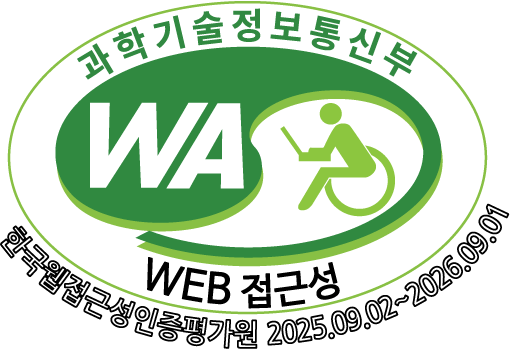본 보고서는 소프트웨어 정의 차량(SDV)과 자율주행 기술 확산에 따라, 자동차 안전의 중심이 기계적 하드웨어에서 소프트웨어 및 데이터로 급격히 이동하고 있다는 점에 주목한다. 특히 자율주행 및 첨단 운전자 보조 시스템(ADAS)의 상용화가 가속화되면서 전통적인 소프트웨어 기능안전 영역의 확대·재편성되고 있음을 확인한다. 연구는 대표적 자율주행 보조 시스템인 테슬라 오토파일럿(Autopilot) 을 핵심 사례로 삼아, 2019년 플로리다주의 정지 차량 충돌 사고와 이에 대한 2025년 플로리다 남부연방지방법원의 손해배상 판결(Barrett v. Tesla, Inc., Case No. 1:21-cv-21940-BB)을 분석하였다. 사고 당시 차량은 오토파일럿 모드로 주행 중이었으나 정지 차량을 인식하지 못했고, 자동긴급제동(AEB)이 작동하지 못한 상태에서 운전자의 부주의가 겹치며 제3자 보행자 사망 및 중상 피해가 발생하였다. 배심원단은 운전자 과실 67%, 테슬라 과실 33%를 인정하는 한편, 사고 데이터 미제출·은폐 의혹, 과장된 마케팅 등을 근거로 2억 달러의 징벌적 손해배상을 추가로 부과하였다. 이는 SAE 기준상 레벨 2(운전자 보조) 시스템에 대해서도 제조사가 예측 가능한 오사용 방지 의무와 정보 제공·데이터 투명성 의무 부담을 명시적으로 확인한 첫 사례라는 점에서 의미가 크다. 보고서는 오토파일럿 사고의 쟁점을 ISO 26262(기능안전), ISO 21448(SOTIF), ISO/PAS 8800(AI 안전) 등 국제 표준의 관점에서 해석한다. ISO 26262는 E/E 시스템 고장(Fault)을 전제로 안전무결성을 관리하는 반면, SOTIF는 센서 인식 한계·환경적 모호성·사용자 오용 등 결함 없는 상태에서도 발생하는 위험을 다루며, ISO/PAS 8800은 AI·ML 기반 알고리즘의 데이터 품질·모델 불확실성을 포괄하는 안전 프레임워크를 제시한다. 아울러 보고서는 UNECE R157(ALKS), R171(DCAS) 등 국제 규정도 함께 검토하였다. 결론적으로, 테슬라 오토파일럿 판결은 소프트웨어 안전이 더 이상 기술 내부의 “품질 이슈”가 아니라, 제조물 책임·징벌적 손해배상·데이터 투명성·AI 안전을 아우르는 종합적 리스크 관리 대상임을 보여준다. 생명·신체와 직결된 산업 전반에서 디지털 전환이 가속화될 때 최소 공통 SW 안전 요구사항으로서 「소프트웨어 안전에 관한 고시」와 같은 지침을 참고해야 할 것이며 나아가 Safety-Security 연계하는 ‘디지털 안전’ 차원의 거버넌스 검토 등을 시사점으로 제시한다. Executive Summary This report examines how the transition toward Software-Defined Vehicles (SDVs) and the growing adoption of autonomous driving and ADAS technologies are shifting automotive safety requirements from hardware-centered control to software- and data-driven risk management. As these systems expand in scope and complexity, software functional safety is being reorganized to address perception limits, human misuse, algorithmic uncertainty, and system-level interactions. The study analyzes Tesla’s Autopilot as a representative Level 2 driver-assistance system, focusing on the 2019 rear-end collision in Florida and the subsequent 2025 verdict by the U.S. District Court for the Southern District of Florida (Barrett v. Tesla, Inc., Case No. 1:21-cv-21940-BB). The Autopilot system failed to detect a stationary vehicle and the AEB did not activate, while the driver was momentarily inattentive, resulting in the death and injury of third-party pedestrians. The jury assigned 67% negligence to the driver and 33% to Tesla, and imposed punitive damages due to concerns regarding withheld crash data and misleading marketing. This case is significant as one of the first to affirm that even SAE Level 2 systems impose obligations on manufacturers regarding foreseeable misuse, adequate warnings, and operational transparency. The report interprets the case findings through international standards including ISO 26262 (Functional Safety), ISO 21448 (SOTIF), and ISO/PAS 8800 (AI Safety). ISO 26262 focuses on E/E system faults, SOTIF addresses risks that arise from functional insufficiencies without faults, and ISO/PAS 8800 extends safety management to AI/ML-based perception and decision models. The analysis also references relevant global regulations such as UNECE R157 (ALKS) and R171 (DCAS). Overall, the Autopilot verdict highlights that software safety has become a legal and regulatory issue linked to product liability, punitive damages, data transparency, and AI governance. As digital transformation accelerates in safety-critical sectors, it is essential to establish baseline software safety requirements?such as Korea’s “Guidelines for Assuring Software Safety” and to advance integrated Safety-Security governance frameworks that support emerging digital risks.



